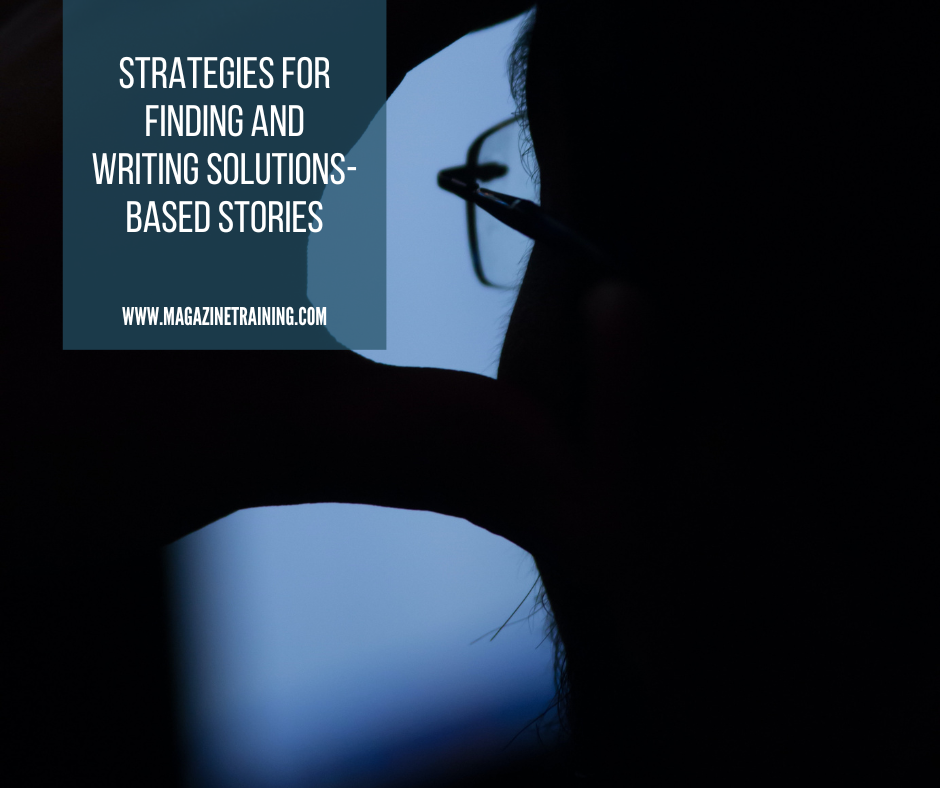
When COVID-19 sent the world into a tailspin, personal protective equipment became scarce, and as the Jackson Hole News&Guide’s health care reporter, I was writing dire stories about the lack of PPE at our hospital. Then I received a phone call in early April 2020 from a source who told me local computer science teachers were turning their skills from engineering education to face-shield production. Using 3D printers and unused materials from student projects, they were printing dozens of shields for health care workers alongside people who were sewing masks.
That call came on a Monday. On Wednesday morning, when our weekly hit newsstands, I had a short solutions journalism feature on the face-shield makers and the elected official organizing the logistics of materials and delivery of finished products. I heard from several community members who wanted to get involved and others who were happy to read about residents mobilizing during a confusing, isolating time. Given the lack of concrete information on how COVID-19 was transmitted, it wasn’t clear whether face shields or masks were more effective, but between the two efforts, health care professionals felt safer and better supported, while residents on lock-down had a small way to help their community.
After my newsroom’s initial training with the Solutions Journalism Network in 2019, the approach, I thought, had an air of finality. Every story needed to be a deep dive that definitively solved an issue, and my first stab at the reporting was a nearly 3,000-word piece about a Colorado program that provided family planning care and IUDs to lower-income women. Around that time, SJN awarded me a grant for travel to produce a four-story project on infrastructure to mitigate avalanches above mountain passes. (Read all parts here: first, second, third and fourth.)
Those first stories I pursued hewed to the grand scale I understood solutions journalism to encompass, but that April 2020 phone call showed me the value of ingraining it in my regular reportage and a path to do so. Though this list is not definitive, the following strategies helped me turn this work into a practice, rather than a project.
- (Almost) anything can be a solutions story. Evaluate every topic on your beat with a focus on solutions. Nearly every problem you report on can lead to a solutions story. For instance, when Wyoming’s high school graduation numbers showed that Jackson graduated a higher rate of English Language Learners than the state overall, I wrote about local graduation rates — something I was already going to cover — by focusing on how the school directed resources toward those students and where other districts had struggled, turning normal coverage into solutions work without much extra effort.
- New programs are ripe for solutions reporting. If a governmental entity is proposing a new program or initiative, it’s likely not the first organization to tackle said problem. Look for other communities that have faced the same issues; they can provide fodder for stories and an indication of how successful a new program might be.
- Talk to your sources about solutions journalism. It might sound strange to turn to the same sources you are holding accountable for ideas, but when politicians or other public officials are crafting new initiatives, they look to what other communities have done. Don’t simply take them at their word that the inspiration they are using is successful, but asking sources directly about evidence is one avenue for finding information and solutions from outside your community. And it helps answer the question of whether officials are looking in the right places.
by Tom Hallberg, International Journalists’ Network
Photo by Enrique Alarcon on Unsplash
Related posts
Magazine Training International’s mission is to encourage, strengthen, and provide training and resources to Christian magazine publishers as they seek to build the church and reach their societies for Christ.

